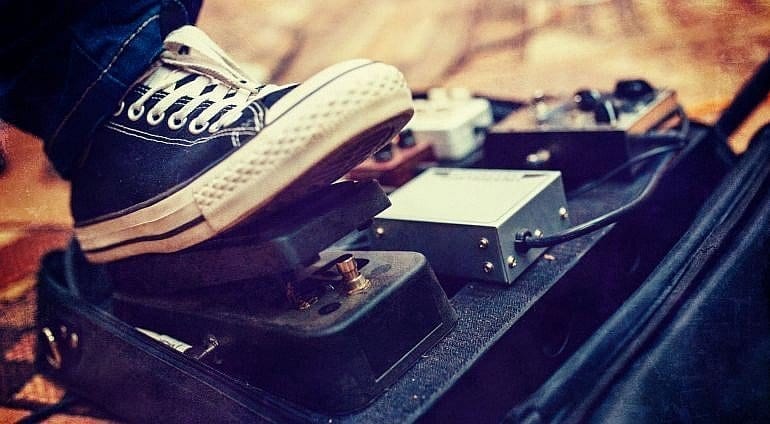
The onomatopoeia “wah-wah” is normally associated with someone crying, particularly a baby, but to musicians it’s also associated with an effect pedal that gives electric guitars, and other instruments, a human voice. Perhaps it’s for this reason that people have such a personal connection with the guitar playing of Jimi Hendrix, like when he played the Star-Spangled Banner at Woodstock, it was as if his guitar was speaking for the generation, pleading with the USA to change its politics. Before we get ahead of ourselves let’s discuss what a Wah-Wah pedal is, its history, function, characteristics, variations and uses in music.
History
Marketed for the first time in 1966 by Warwick Electronics Inc. / Thomas Organ Company, the first wah-wah pedal (or wah pedal, for short) was named after famous trumpeter Clyde McCoy who developed a “wah-wah” sound in the 1920s by muting his trumpet in rapid succession with a Harmon mute. The wah pedal was invented by accident in 1965 by Brad Plunkett. This young engineer was tasked with dismantling a Vox AC-100 amp in order to find a cheaper way of manufacturing it while maintaining the sound quality. He noticed that the amp had an MRB (middle range boost) switch on it, which could be replaced by the much cheaper potentiometer. After designing a circuit to vary the boosted frequency he asked a friend to plug in his guitar while he turned the potentiometer knob and discovered the famous “wah-wah” sound! Since it’s not possible for a guitarist to control the knob by hand while playing he had the brilliant idea to transform an organ’s volume pedal to control the potentiometer. This was the first wah pedal prototype.
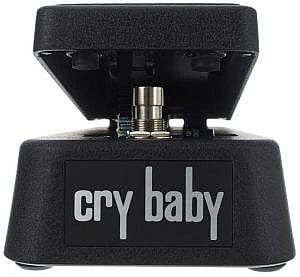

The Wah Effect
The principle of the wah effect is simple enough: It’s basically the shifting of the boost of mid-range frequencies from low-mids (around 350 Hz) to high-mids (around 2.2 kHz). The oscillation of the pedal, from heel (low) to toe (high) positions, while playing the instrument, creates a “wah” or “wow” effect.
Here is an audio sample of a note being played first without the wah effect and then with:
Not a one-trick pony
Not all wah pedals are alike. The differences come from the components used and the sound produced by them. The first generation of these pedals used a potentiometer to control the effect. The problem with potentiometers is that with prolonged use they attract dust and this can create crackling and/or muffling of the effect. This is the reason why the manufacturer Morley uses an optical sensor which doesn’t wear out, a solution known for its rock-solid durability.
In the 1990s, the wah effect started being reproduced digitally using DSP circuits, which makes one question the quality of the sound. For the wah effect, it is essential that the tone shift is consistently smooth and with DSP circuits it is often auto-adjusted and can skip. Processors are becoming increasingly faster and more powerful and digital effect pedals are improving but still nothing beats the gool ol’ potentiometer when it comes to producing a smooth wah.
Another important point is the pedal’s frequency range. It’s often a matter of preference, but as a general rule, the wider the frequency range, the more precisely and sensitively the effect can be controlled. The Morley Classic has a wider range than the Dunlop Cry Baby. A narrower range, on the other hand, makes it possible to control the effect more comfortably, particularly when standing.
Other models are equipped with controls to change the frequency range and/or tone, control the volume or adjust the peak of the effect.
Where in the signal chain?
In most cases, the wah is placed at the very beginning of the signal chain of pedals/effects, directly after the guitar. We usually put the compressor, the overdrive and everything else after it. There is an exception however: some fuzz pedals require a high impedance signal and therefore need to be placed in 1st position, just after the guitar. If you have a fuzz pedal, test it out both ways to see which one gives the best results. For more info about the signal chain position of the wah read this.
Areas of use
The wah effect is very versatile and can be used in almost every genre of music. It is very popular in rock and blues but also in hard rock, metal, funk and jazz. It allows you to boost your guitar solos in a special way (for example Sweet Child O’Mine) or to colourize or liven up a rhythm part. You don’t always have to oscillate the pedal, it can also be used permanently in one position or combined with overdrive to get a special grain (Money for Nothing riff or the Whole Lotta Love solo).
Here are some audio samples of the various ways you can use the wah effect:
Guitar chords:
Rhythm with ghost notes:
Rock riff:
Lead:
Here are some examples of pieces where the wah has left its mark:
- Voodoo Child (Slight Return) – Jimi Hendrix (Intro)
- Theme From Shaft – Isaac Hayes
- Bad Horsie – Steve Vai (Lead Part)
- All Along The Watchtower – Jimi Hendrix (studio version at 2:16)
- Sweet Child O´ Mine – Guns´n´Roses (studio version at 4:04)
- One And The Same – Audioslave (Intro)
- Surfing With The Alien – Joe Satriani (Lead Part)
- Enter Sandman – Metallica (studio version at 2:41)
- Whole Lotta Love – Led Zeppelin (studio version at 3:05)
- Money For Nothing – Dire Straits (Live Album : On The Night)
What’s your favourite wah-wah pedal and why?
→ FIND ALL OF THOMANN’S WAH-WAH PEDALS HERE
2 comments
Leave a Reply
You are currently viewing a placeholder content from Facebook. To access the actual content, click the button below. Please note that doing so will share data with third-party providers.
More InformationYou are currently viewing a placeholder content from Instagram. To access the actual content, click the button below. Please note that doing so will share data with third-party providers.
More InformationYou are currently viewing a placeholder content from X. To access the actual content, click the button below. Please note that doing so will share data with third-party providers.
More Information



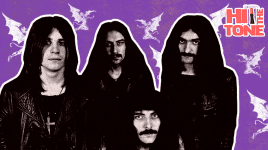
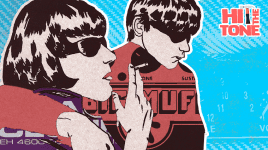


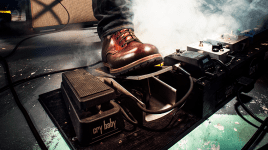
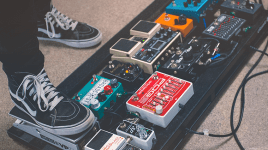
steve gould says:
Just listened to ‘the crying game’ 1964 by Dave Berry and the Cruisers. Couldnt help notice the wah wah guitar effect and thought to myself, this is much too early for wah wah pedal. Curious.
Barry says:
Yes interesting.